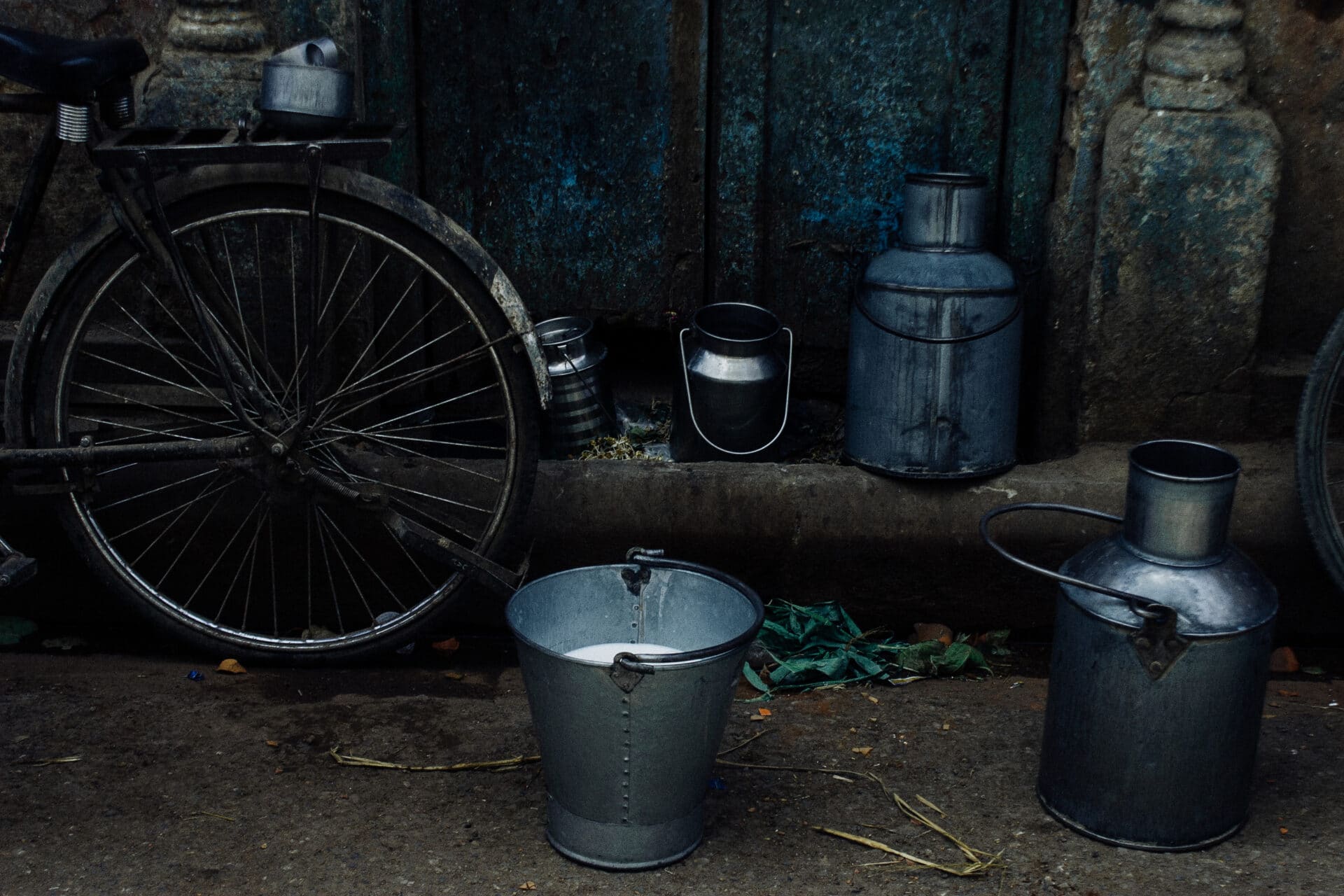Distillation is a process used to separate mixtures of liquids and solids. It is a common technique in the field of chemistry that can be used for a wide range of applications. Distillation can be used to purify materials, separate components, and create essential oils or alcohols. This method of separation is also used in industries such as oil refineries, food production, and pharmaceutical manufacturing. The process involves heating a mixture until it reaches its boiling point and then collecting the vapor that is created. The vapor is then condensed and collected for use. In essence, distillation is an efficient way to refine and separate compounds from each other.Distillation is a process used to separate components from a liquid mixture by boiling the mixture and condensing the vapor. It is an important technique used in many industries, including oil refining, water desalination, beverage production, wastewater treatment, industrial chemistry and food processing. The most common uses of distillation include:
1. Producing drinking water from seawater or brackish water by removing impurities and salt from the source.
2. Separating ethanol from fermented beverages such as beer and wine to produce a higher concentration of alcohol.
3. Separating petroleum fractions such as gasoline, kerosene and diesel fuel.
4. Purifying chemicals for use in industry or research by removing impurities that can affect performance or safety.
5. Removing unwanted odors and flavors from food products such as milk, cooking oil, vinegar and fruit juices to produce a purer product with better taste and smell.
6. Concentrating essential oils from plants for use in food flavorings or aromatherapy products.
Distillation in Chemistry
Distillation is a common process used in chemistry to separate and purify liquids. It involves boiling a liquid, collecting the vapours formed and condensing them back into liquid form in a separate container. This allows for the separation of components that have different boiling points, as each component will vaporise at its own specific temperature. Distillation can be used to purify liquids, create alcoholic beverages, separate mixtures of liquids with different boiling points, and even extract oils from plant material.
The process of distillation begins by heating up the liquid mixture until it boils. As it boils, the vapours formed can be collected and directed into a condenser where they are cooled and liquefied again. The condensed liquid is then collected in a separate container for further processing or use. As the different components of the mixture have different boiling points, only those components that vaporise at the temperature reached during distillation will be separated from each other. This allows for very efficient separation of mixtures containing multiple components.
Distillation is also commonly used in the production of alcoholic beverages such as whiskey or vodka. In this application, dist
Distillation in Industry
Distillation is a process used in industry to separate compounds or mixtures based on their boiling point. It is commonly used for purifying liquids and extracting compounds from solutions. Distillation can also be used to separate a mixture into its components, such as separating petroleum products into gasoline, kerosene, and diesel. Distillation is one of the most widely used methods of separation in industry today.
The purpose of distillation in industry is to obtain a more concentrated product from a mixture or solution. This process can also be used to purify solvents or other liquids that have been contaminated with other substances. By using distillation, the desired components can be separated from the impurities and collected for use. The boiling points of different compounds are manipulated using heat and pressure to separate them from each other.
In addition to separating components, distillation can also be used to purify liquids by removing impurities such as solids, water, or gases. This process is often used in the petrochemical industry to refine crude oil into products such as gasoline and diesel fuel. By removing impurities through distillation, the
Distillation
Distillation is a process of separating the components or substances from a liquid mixture by using selective boiling and condensation. Distillation is one of the most widely used separation techniques in the chemical and pharmaceutical industries. It has been used for centuries to separate liquids from solids, as well as to purify and concentrate solutions. There are different types of distillation processes used in industry, each with their own advantages and disadvantages.
Fractional Distillation
Fractional distillation is one of the most commonly used distillation processes. It is a type of distillation that separates different compounds based on their boiling points. This process uses a fractional column filled with packing material or trays to create a large number of theoretical plates that help separate components according to their boiling points. The vaporized liquid mixture is passed through the column, and each component will be collected separately at different heights in the column, depending on its boiling point.
Steam Distillation
Steam distillation is another type of distillation process which utilizes steam to separate volatile compounds from non-volatile compounds. In
Distillation Used to Purify Water
Distillation is a process of purifying water by utilizing the differences in boiling points of water and other substances. In this process, contaminated water is heated until it turns into steam. The steam is then cooled and condensed back into liquid form, which results in pure and clean water. This method can be used to remove impurities, bacteria, and other contaminants from water. It also leaves behind any minerals or trace elements that may be beneficial for health. Distillation is a simple and effective way to produce safe drinking water that is free from harmful microorganisms and other contaminants.
The process of distillation involves heating up the contaminated water until it turns into steam. The steam will rise to the top of the container where it will come in contact with a condenser which cools it down and turns it back into liquid form. As the steam condenses, any impurities or contaminants are left behind and only clean water remains at the bottom of the container. This process can be used to purify both surface and ground water sources, making it an ideal solution for providing safe drinking water in areas where access to clean drinking sources are limited or unavailable.

Advantages of Distillation
Distillation is a process that separates components from a liquid mixture by vaporizing and condensing the mixture. This process has many advantages for both industrial and home use. It can be used to purify water, separate chemicals, and even create alcoholic beverages. Here are some of the advantages of distillation:
First, distillation eliminates impurities from liquids. This process allows for the separation of compounds with different boiling points, which can be useful for removing contaminants from water or other liquids. The vaporized liquid is then condensed in a separate container, leaving any impurities behind.
Second, distillation is an efficient way to concentrate liquids. Distilling a liquid allows it to be concentrated into a smaller volume without losing its chemical properties or flavor profile. This is useful for making alcoholic beverages or other concentrated liquids used in industrial processes.
Finally, distillation can also be used to create mixtures of different liquids with specific properties or flavors. By combining two or more liquids through the distillation process, it is possible to create mixtures with specific combinations of
Distillation to Separate Mixtures
Distillation is a process used to separate components of a mixture. It is based on the different boiling points of the components in the mixture. Distillation relies on the fact that different molecules have different boiling points; when heated, some molecules will evaporate first, while others will remain in a liquid state. By controlling the temperature and pressure of a mixture, one can separate it into its individual components. This process is commonly used in industrial processes, such as oil refining and beer brewing.
The most common type of distillation is simple distillation. In this process, the mixture is heated until one of its components evaporates. The vaporized component is then condensed back into a liquid form and collected. This can be done multiple times, allowing for all components to be separated from each other.
Fractional distillation is another type of distillation used to separate mixtures. In this process, the mixture is heated under very precise conditions. Since different molecules evaporate at different temperatures, they can be separated from each other by controlling the temperature and pressure of the vaporized mixture as
What is Reflux Distillation?
Reflux distillation is a method of separating mixtures of liquids by using heat. It involves boiling the mixture in a container and passing the vapor through a condenser, which allows the liquid to reflux back into the container. The process of reflux distillation is used for a variety of purposes, including purification and concentration of liquids.
How Does Reflux Distillation Work?
The process of reflux distillation works by heating up a mixture until it begins to boil. As it boils, the vapor rises and passes through a condenser which cools the vapor and causes it to condense back into liquid form. This liquid then flows back down into the original container, which is known as “reflux”. The process is repeated until the desired level of purity or concentration has been achieved.
The rate at which the liquid refluxes back into the container can be controlled by adjusting either the temperature or pressure inside the container. By increasing either one, more vapor will be created and more liquid will flow back down

Conclusion
Distillation is an incredibly versatile process that has a wide range of applications in many different industries. It can be used to purify liquids, separate mixtures of liquids and gases, create alcoholic beverages, and cleanse wastewater. Distillation also has the potential to revolutionize the way we produce energy, by allowing us to obtain energy from sources that would otherwise be unavailable. The process is relatively easy to understand and it offers numerous benefits for those who use it.
Distillation is an invaluable tool for the industrial world that can be used in many different ways to improve processes and reduce costs. As technology continues to evolve, distillation will become even more important in a variety of industries as an effective way to separate mixtures and purify materials.
Ultimately, distillation is a powerful process with a multitude of applications that can benefit both individuals and businesses alike. By understanding how it works and its capabilities, one can better utilize it in order to make their processes more efficient and cost-effective.

